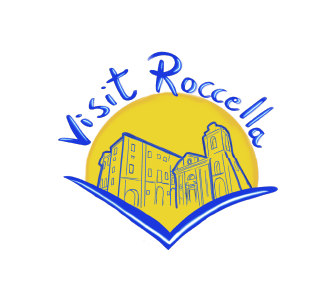translated with AI
Writing about Cappelleri Palace inevitably leads to informing about the owning family, which, over the centuries, perhaps more than others, has shaped the civil, economic, social, and political history of Roccella.
The first documented records that the archives deliver date back to the late 1600s. The Cappelleri family reflects the trend of the time, prevalent throughout Calabria, of structuring the family on rigid principles that did not allow for decision-making dynamics regarding each member’s role within it. For example, in every generation, we find at least one clergyman in all the primary families of Roccella. About this widespread phenomenon, someone specified:
“Churchmen of bourgeois origin belonged to families of landowners or professionals, rich in local prestige. They were often directed towards priesthood to preserve intact – according to an ancient custom – in the hands of one single son the family assets accumulated with great effort over time: it was common to find in wealthy families even more than one clergyman or nun, which partly explains the multitude of clergymen that swarmed in every province.”
As a first priority, the family had to keep the family assets prosperous and preserve the lineage. The extinction of the lineage, paradoxically, was to be sought within the centuries-old and rigid family structure.
Analyzing wills and deeds of “marriage contracts”, drawn up by notaries in past centuries, one can glean information that delivers testimonies on family organization based on inflexible models, which established economic premises and models of life, customs, traditions, etc. The power of a family was sanctioned by the magnitude of its accumulation of movable and immovable property, so no fragmentation of the entire heritage was allowed; rather, all its members had to contribute to its growth. This was a typical family model of the centuries from the fifteenth to the nineteenth. Furthermore, there was a felt need to preserve the unity of wealth linked to one’s surname, convinced of ensuring prestige and historical value for a long time. In this family scheme, typical of Neapolitan and Southern aristocracy, male children, and among them the firstborn, were the main beneficiaries of wills, both for the full preservation of the inherited patrimonial lot and for guaranteeing the continuation of the father’s surname, as mentioned. An intelligent choice was to steer one or more children towards taking ecclesiastical vows. This shortcut had a purely technical and advantageous justification for the family. A priest who lives according to the precepts of the Christian religion in the service of the Church does not perform any remunerative work, which, for his admission to the ecclesiastical order, required a donation from the family to ascend to the Ecclesiastical State and to sustain oneself. This was the formula reported by notarial deeds and transcribed in episcopal archives. Therefore, this donation, mostly land, was not taxed to allow the clergyman, with the income, to lead a dignified life in his state and in the service of the community.
In this train of thought on family organization, the Cappelleri family fit perfectly.
We find precisely Mr. Domenico Cappelleri, who, among other properties, appears in the early 1800s as the owner of the palace, then consisting of five rooms and a kitchen. Mr. Domenico, destined to wear the tunic, for the reasons stated above, was attracted to politics. We see him in Roccella siding with the Republic in 1799. He was a Freemason who kept in touch with other members of the district.
When that page of history ended ingloriously, repression began, which is why he went into hiding, a fugitive, perhaps intending to emigrate, he was arrested in the area of Crotone. All his assets, including the palace, were seized. It took several years before the family could regain its properties.
After exiting the scene (he died in Roccella on March 28, 1835), both religiously and politically, his brother Mr. Nicola took over the management of the family’s assets.
The Cappelleri Family profoundly marked the administrative life of Roccella; between Mr. Nicola and his nephew Giuseppe Maria, they occupied the Mayor’s seat for at least twenty years over time.
They never lost sight of what was the main prerogative of the family: business. Their entrepreneurial drive led them to produce and export wine, the product of their vineyards, with the slogan “Cappelleri Vineyards, contrada Romanò Roccella Jonica”, and, above all, they established a pasta factory in the Giardini area, known as “Pastificio Margherita”, in honor of Mr. Vincenzo’s wife: Mrs. Margherita Genoese Zerbi from Reggio Calabria. To increase their business with their entrepreneurial industriousness, in 1888 they acquired the Di Bianco Palace, on the Caulonia side of Piazza S. Vittorio. The goal was to make their trading activities more convenient by using the freight station of the railway, which had been active for a few decades.
Cappelleri Palace hosted, on the night between September 22nd and 23rd, 1847, Pietro Mazzone, one of the five Martyrs of Gerace. He spent his last hours as a free man within its walls along with his fraternal friend Mr. Giulio Cappelleri, who in those days was the Chief of Urban Guards in Roccella. The next day, accompanied by two urban guards, Pietro Mazzone, on horseback, headed towards Gerace to surrender to the authorities, pursued by an arrest warrant and a reward hanging over his head. He was shot in Gerace, along with four of his companions, on October 2nd, 1847.
The extinction of the powerful Cappelleri family occurred with Giuseppe Maria Cappelleri, who had married a Baroness De Blasio from Palizzi, but had no children.
The centuries-old and rigid family organization was ruthless with those families that still preserved the ancient system to assert their power in the community, through the ownership of assets in the hands of a single person. The Cappelleri, the Mazzones, and others were the destined victims, prisoners of their loyalty to that power system that inexorably marked their extinction.
Today the Palace, completely renovated, is owned by the Giannitti family.
